Why are the neighbors angry?
By Jim Gates
When my wife and I bought our first house in Torrance 50 years ago, I was standing in the front yard with the seller's agent, discussing terms. An airplane flew over and I looked up. He noticed my reaction and, without my saying one word, he said, "Oh, they are not allowed to fly over this area."
When we moved in, I found out that airplanes did, indeed, fly over my home--LEGALLY. Our house was under the airport traffic pattern. I have been a pilot for 64 years. Traffic patterns exist at every airport in the US-including at Torrance Airport. Their configurations are standard throughout the U S so that any pilot arriving at an airport for the first time automatically knows what to do to fit in with existing traffic and land safely.
Under California law, the agent was required to disclose the location and effects of the traffic patterns. But, the agent lied to me and violated the law!
|
This is what the traffic patterns look like. They are necessary to sequence arriving and departing airplanes so they can
operate safely. Two aircraft cannot be on the runway at the same time, so pilots must leave sufficient space from the
preceding aircraft for it to clear the runway before he or she is legally able to land. Maintaining that separation is
the main job of the control tower. Pilots must do this themselves when there is no control tower or if one is not in operation.
Someone deciding to live beneath a traffic pattern needs to know that aircraft will frequently fly overhead at standard
traffic pattern altitude (1,100 feet above mean sea level at Torrance). Locations of traffic patterns is crucial to
that decision.
Why isn't there more enforcement of these disclosure laws? Why was there no public notice from the City of Torrance about
location of the traffic patterns and their effects?
|
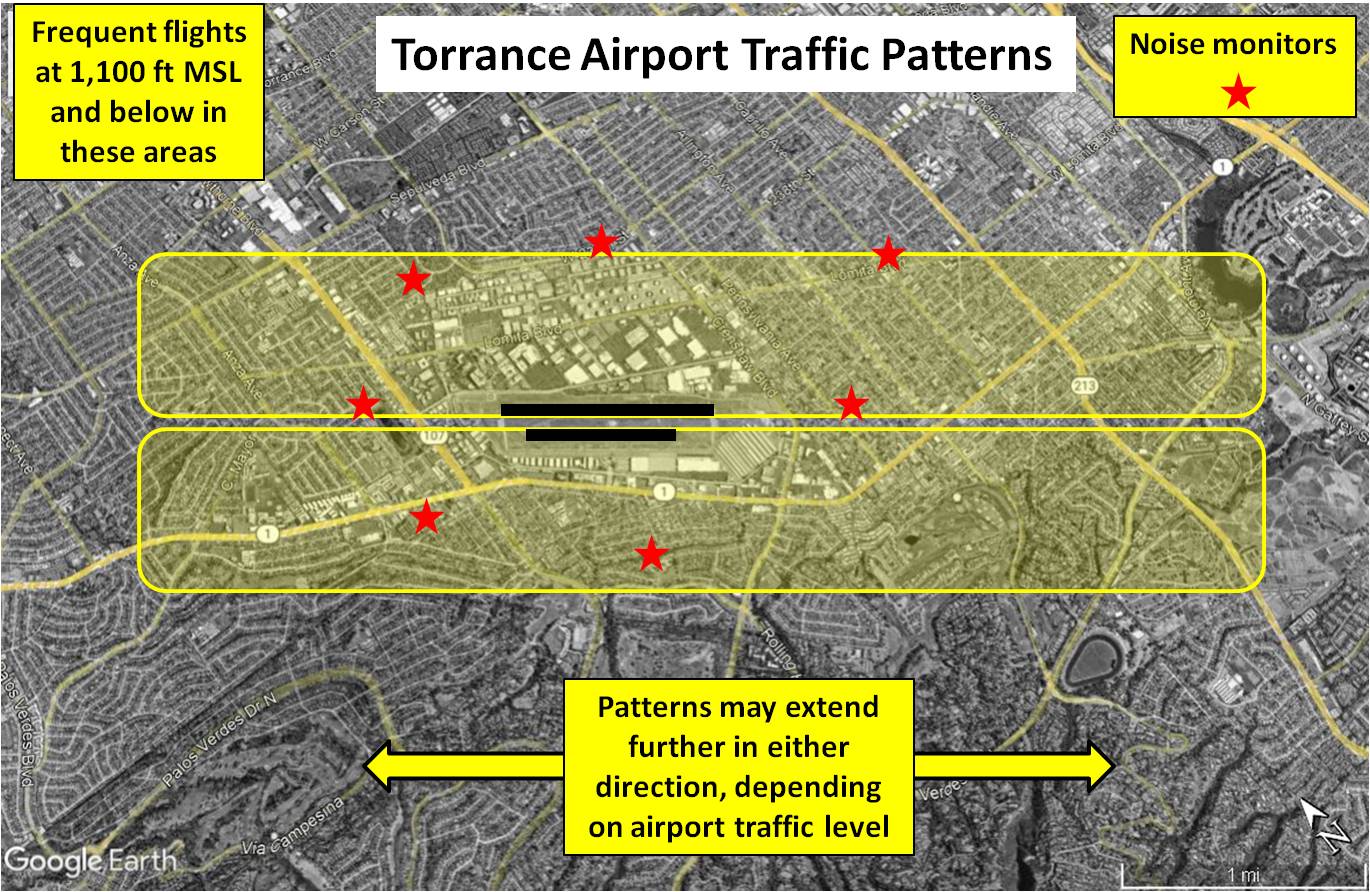
|
The City Hides Crucial Airport Information
When we moved to Torrance, there was already some friction between airport operations and those who lived beneath the traffic
patterns. In July 1979, the City hired a consultant to study the same issues that we are facing today. The consultant
(PRC-Speas) studied the relation between airport operations and effects on residenta. They issued a final report in
November 1981. Its title is Airport Noise Control and
Land Use Compatibility-Final Report (ANCLUC. The report recommended specific policies that had proven very effective in
maintaining good relations between other airports and their neighbors.
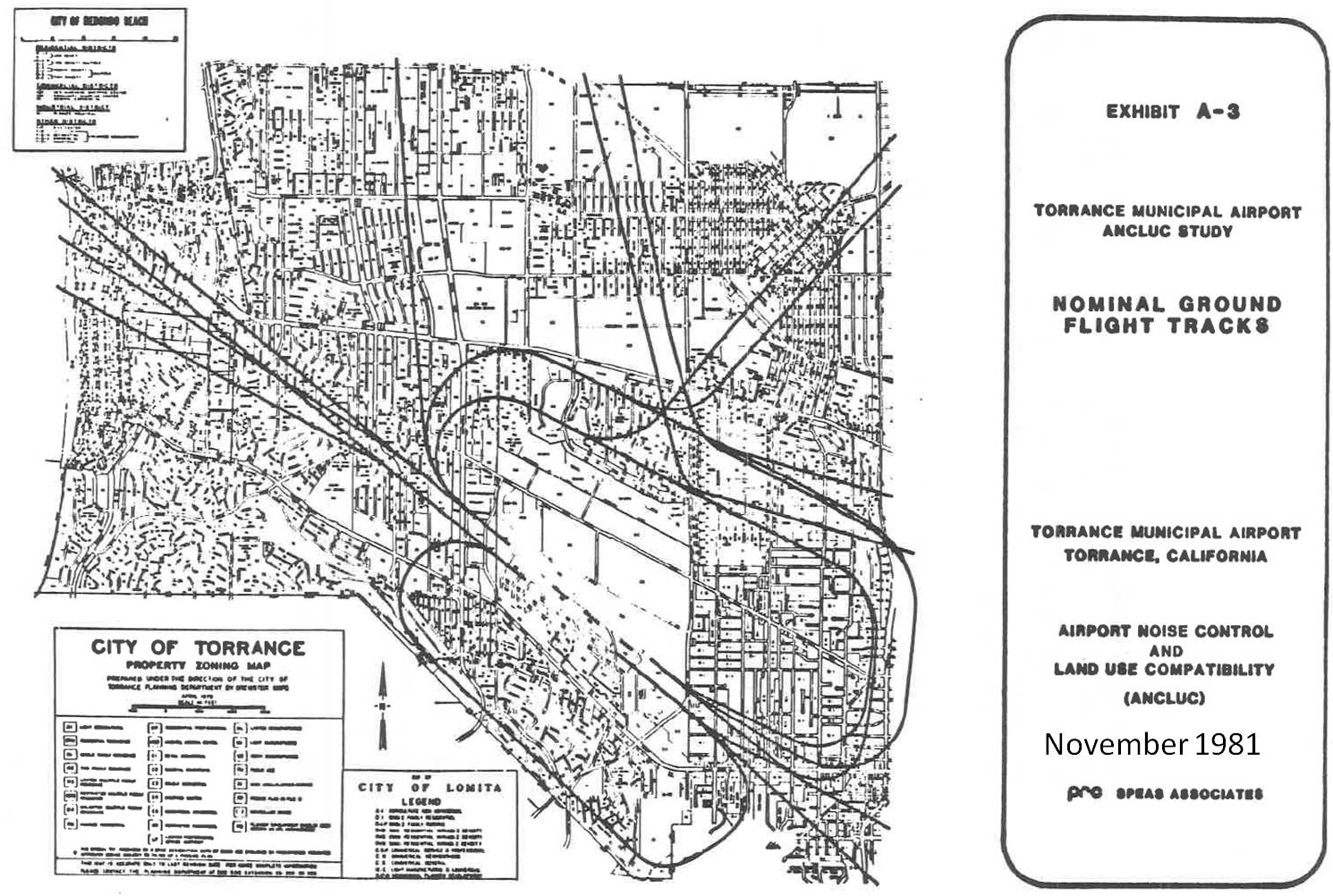
|
This is an illustration from the report-a copy of which can be obtained from the City of Torrance. It shows the Torrance Airport traffic patterns as they existed in the early 1980s. They are exactly the same today, except the altitudes shown are not the 1,100 MSL used today. At that time, airport operations averaged about 400,000 operations per year; today they are about half that. Then, as now, about half of those operations are from touch-and-goes.
The City's consultant recommended that this information about traffic patterns and their effects on residences below be shared with the public-both existing and prospective residents.
|
|
This is also a map from the report. The dashed lines delineate the recommended Airport Planning District in which full public disclosure of traffic patterns and their effects would be made with road signs, notes permanently attached to property deeds, maps like this published in newspapers, and enhanced enforcement of disclosure requirements by the real estate businesses. Today, this information could be published on City websites so potential residents would be fully aware about how traffic patterns would affect their prospective residence.
Why were the consultant's recommendations ignored? Why was this information hidden from potential residents?
Why are there no enhanced disclosure requirements? Why--EVEN TODAY--is there no such information about traffic patterns on the City's Noise Abatement
website?
|
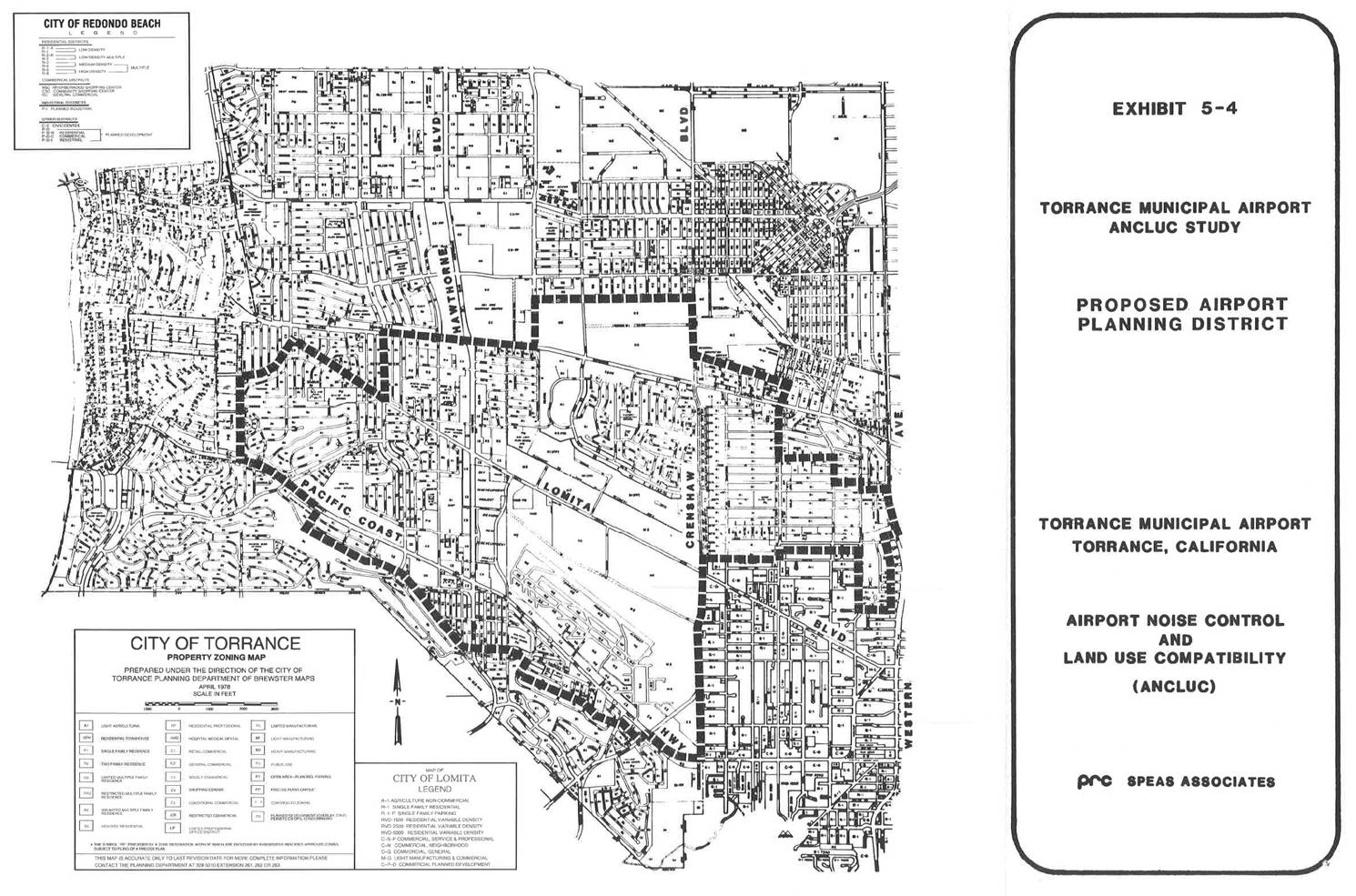
|
The City oversteps Its Authority
Congress, in 1958, gave the FAA exclusive authority to regulate U. S. aviation. All local laws that attempt any regulation
in this area are preempted under the Constitution's Supremacy Clause (Article 6, Clause 2).
The city of Blue Ash, OH, passed a city ordinance in the 1970s that required aircraft using the Blue Ash Airport to follow a specified flight path as a noise abatement measure. Pilots who violated this noise abatement restriction were fined $100.
In 1978, the United States sued in Federal District Court of Southern Ohio to prevent the City of Blue Ash and its city council from enforcing their ordinance because it encroached on the FAA's exclusive authority to regulate airspace. The city lost. The City appealed to the 6th Circuit in 1980. The appeal was denied.
The courts ruled that cities and states have no authority to regulate aircraft in flight because those regulations are preempted.
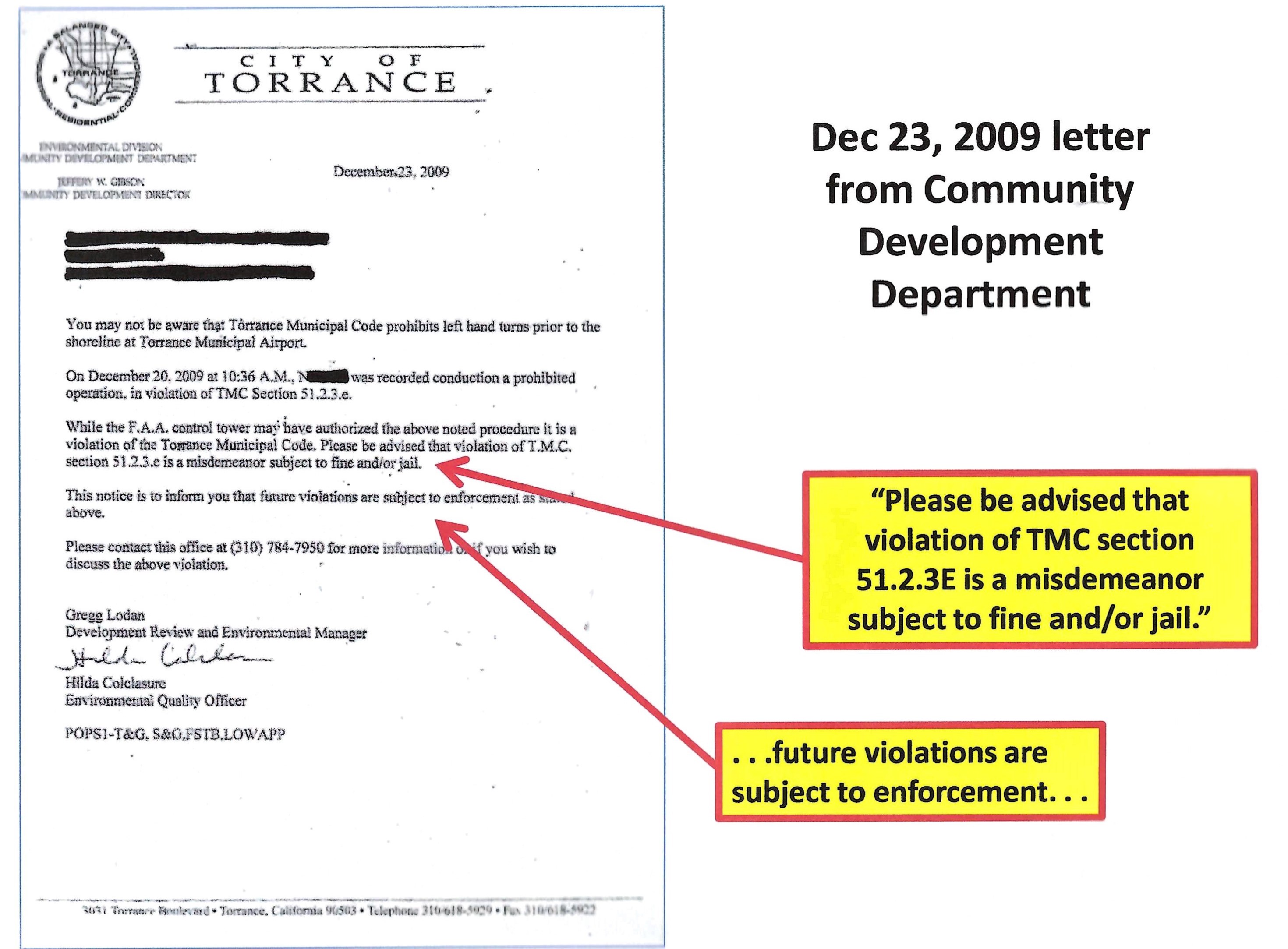
|
Instead of enacting the consultant's public disclosure recommendations, the City decided (incorrectly) that it could specify
the flight paths of airplanes for noise abatement purposes (as did the City of Blue Ash). It pointed to Section 51.2.3E of its
Municipal Code (no left turn on west departures) as their authority to do so. The Community Development Department began to
send letters to pilots who did not comply, threatening fines and jail time.
|
In 2012, the enforceability of TMC 51.2.3e was discussed at an Airport Commission meeting. Two pilots warned that it
conflicted with FAA authority. City staff responded that the TMC section was "grandfathered" under the Airport Noise
and Capacity Act of 1990 (ANCA) and also cited the 1981 ANCLUC report.
The FAA Flight Standards Office denied any "grandfathering" authorization and the City has no documentation to support this claim. There is also no mention of TMC 51.2.3e in the 1981 ANCLUC report. The staff lied!
ANCA deals only with stage 2 and 3 turbine-powered aircraft weighing over 12,500 lbs-not with the small, piston-powered aircraft that are typical users of Torrance Airport. While ANCA does allow "grandfathering" it only applies to previous agreements involving operators of those stage 2 and 3 aircraft. None of these types of aircraft have ever used the traffic patterns at Torrance Airport.
I wrote the FAA Chief Counsel to find out if the "no-left-turn" TMC section was valid. The FAA response made it very
clear that the TMC section 51.2.3e was a violation of the FAA's exclusive authority to regulate aircraft and that it
did not involve ANCA. The City's TMC section was preempted under the U. S. Constitution's Supremacy Clause and
there is no "grandfathering" provision in the Constitution.
Since the warnings to the Staff at Airport Commission had been ignored, I shared the FAA's letter with the City Attorney, City Manager and City Council. Again, no response.
The City, however, decided that the FAA was wrong and that it could enforce the TMC, still claiming it was "grandfathered" under ANCA.
The City Staff wrote to the FAA Chief Counsel with this claim of "grandfathering" under ANCA and the FAA verbally responded with another "NO." The City Attorney insisted on a written response, so the FAA again said "NO" in writing. Then, the City Attorney hired an outside counsel to write the FAA again with the same claim of "grandfathering" under ANCA. Again, the FAA responded that the City's claim was not true, so the City has written and asked the FAA for a FIFTH TIME. FAA's response is still pending.
The City Hides Complaint Information From Potential Residents
|
Torrance Airport is a public-use transportation facility-like streets and freeways. Its use fluctuates in response to demand. The problem areas change over time as traffic characteristics change, so the source location of complaints is necessary to know where the problems are and the number of complainants is necessary to gauge the magnitude of the problem.
Torrance Airport Association (TAA) has for many years obtained the logs of airport complaints, which are public records.
This information is necessary to characterize the problem so that TAA and pilots can to help craft solutions that are safe, effective and comply with Federal Regulations.
|

|
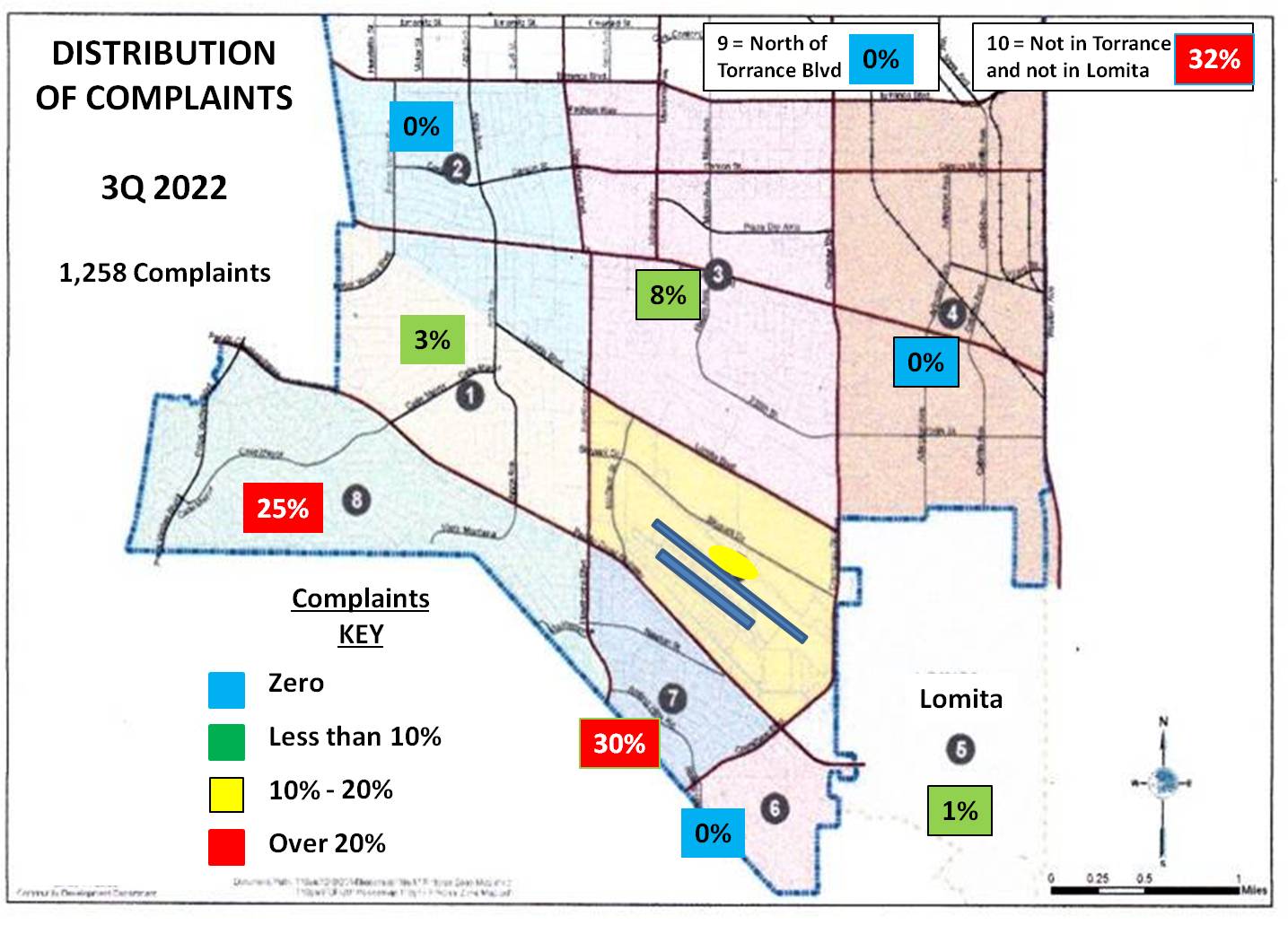
|
The first study of complaints was made over a 14-month period. Results showed that about half of complaints were made by only 12 individuals and that one individual, who lived in Manhattan Beach, was the most prolific. The next most prolific individual was an airport commissioner who lived west of the airport-an area that was the source of a large majority of the complaints from the other 10. Following publication of this information, City Staff began to redact names and addresses from the complaint logs provided for TAA's analysis. This hid the actual number of complainants and where the complaints originated.
Instead of addresses, City Staff defined 10 zones in and around the city and included the zone for each entry in the logs. This enabled TAA to produce and publish a map showing where complaints originated.
Why doesn't the City perform this analysis and make this information public?
|
At the end of September 2020, the City decided not to renew the very expensive contract to operate its noise monitoring
system. It was costing nearly $1,000 per day, although less than 2 aircraft per week violated the TMC noise limit. After
the contract was terminated, there was a huge community outcry (without any proof) that noise from airport operations increased dramatically as a result of having no monitoring system-in spite of no actual change in flight operations. Staff claimed the new
Casper system would enable them to enforce TMC restriction on turns after departure (which the FAA said was unenforceable) and reduce both noise and resulting complaints.
|
As a result, the City signed a new contract with a new company, Casper. It began operation in August of 2022.
With the new Casper system, the City ceased providing any information about zones in which the complaint source was
located. I already explained how this information is important to know how the problem areas were changing and, perhaps
more important, to let prospective home buyers know what areas they should avoid if they were concerned about living
under airport traffic patterns. If this information were available to a potential buyer, it would be more difficult
for a real estate agent or the seller to skirt California disclosure laws.
Staff says it no longer records any of the data that was used to make the "Complaint Zone" map. According to the Casper
Monitoring System data for January 2023, only 1 person made complaints in Redondo Beach, only 1 in Lomita and only 6 in
Torrance.
Why would the City want to hide this information from prospective buyers?
I live in one of the areas flagged as red in the Complaint Distribution Map. Airplanes still fly over my house. Neither
of these graphics show any traffic patterns. Prospective buyers are still in the dark about traffic patterns' location
and effects and no longer have any information about areas that generate many complaints.
|

|
We have questions:
- Why doesn't the City enhance real estate disclosure requirements?
- Why is the City hiding crucial information about traffic patterns?
- Why is the City lying about their lack of authority to regulate aircraft in flight?
- Why is the City hiding information about noise-impacted areas?
Recommendations:
- Publicize traffic pattern information (areas covered, altitudes used, expected frequency of flights) on City websites
- Publicize complaint information (number of complainants, number of complaints, source locations) in monthly on-line reports
- Listen to pilots' and flight schools' practical recommendations
- Repeal invalid, unenforceable and preempted TMC sections (51.2.2 , 51.2.3, 51.2.19) to remove misleading information






